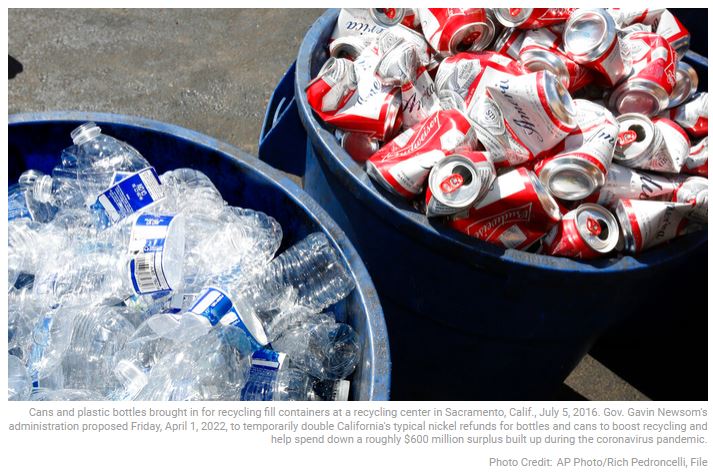 There are a few states that still pay consumers for recycling aluminum and bottles. California, Connecticut, Hawaii, Iowa, Maine, Massachusetts, Michigan, New York, Oregon, and Vermont, though California has found a vast number of unclaimed recyclables— $600,000,000 worth to be exact.
There are a few states that still pay consumers for recycling aluminum and bottles. California, Connecticut, Hawaii, Iowa, Maine, Massachusetts, Michigan, New York, Oregon, and Vermont, though California has found a vast number of unclaimed recyclables— $600,000,000 worth to be exact.
So, what is California planning to do with this overabundance of unclaimed funds? They are going to further incentivize consumers to recycle by giving back more in deposits. “The move would make California among the highest-paying recycling programs in the country.”
How does it work? When someone purchases a bottled beverage, they are charged five cents that can be recouped when they return the bottle or can for recycling. Under this new temporary plan, they will still pay the five-cent charge, but they will receive double when they return the bottles or cans. The goal is to raise the recycling rate for beverage containers from 70% to at least 80%. The recycling push has taken to a national level and goes hand in hand with the push for manufacturers to include a higher percentage of recycled material in their containers.
How might this affect labeling? Right now, we have 10 states that have a deposit and recycling program and have found a way to ensure this information is on cans and bottles throughout the country, but what happens when 20, 30, or all 50 states consider this program? It will definitely become a labeling nightmare that food and beverage manufacturers will try to avoid if at all possible.
Pragmatyxs and our labeling partners are no strangers to complicated, information-heavy labeling requirements. From pharmaceutical regulations to medical device compliance for labeling, it is a challenge we are ready for.